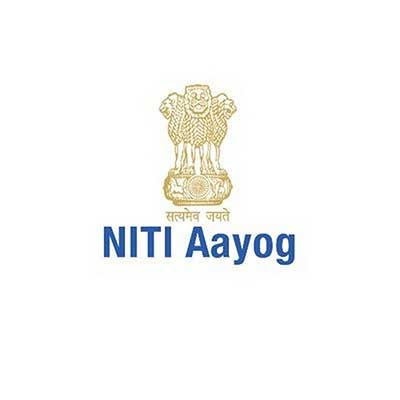Date: 08/10/2022
Relevance: GS-2: Statutory, regulatory, and various quasi-judicial bodies.
Key Phrases: NITI Aayog, State Institutions for Transformation (SITs), State Planning Boards, NITI Aayog-like bodies, cooperative federalism, Rejuvenate state planning departments.
Why in News?
- The NITI Aayog - the think-tank at the Central level - will handhold each state to set up similar bodies, replacing their planning boards for faster and inclusive economic growth, in tandem with the vision of becoming a developed nation by 2047.
NITI Aayog-like bodies:
- The plan will be implemented in 10 states in the first phase and the rest by March 2023.
- The NITI Aayog has clarified that the exercise is likely to involve guidance rather than compulsion to encourage states to replace their planning boards with Aayog-like bodies.
- It is being said that the move was part of NITI´s mandate of fostering cooperative federalism, by helping states prepare development strategies and visions to achieve their socioeconomic goals.
- States that are interested can either establish State Institutions for Transformation (SITs) to drive their development agendas or reimagine the role of institutions such as planning departments and boards.
NITI Aayog:
- It was set up in 2015 in place of the Planning Commission.
- It serves as the apex public policy think tank of the Government of India, and the nodal agency tasked with catalysing economic development, and fostering cooperative federalism through the involvement of State Governments of India in the economic policy-making process using a bottom-up approach.
Objectives of Niti Aayog:
- Fostering cooperative federalism, active involvement of states
- Formulation of plans at the village level, aggregation at higher levels
- Special attention to sections at risk of not benefitting adequately from economic progress
- Economic policy that incorporates national security interests
- Feedback for constant Innovative improvements
- Partnerships with national and international think tanks
- Creating a knowledge, innovation & entrepreneurial support system
- Platform for resolution of inter-sectoral & inter-departmental issues
- State-of-the-art resource centre for research on good governance
- Focus on technology upgradation and capacity building
The important role of the states in a nation’s GDP:
- The move is in recognition of the fact that except for sectors like defence, railways, and highways, the national gross domestic product (GDP) growth is an aggregation of states’ rates of growth.
- Health, education, and skilling are primarily with the state government.
- The NITI Aayog notes that the state government’s role is critical to improving ease of doing business, land reforms, infrastructure development, credit flows, and urbanization, all of which are vital for sustained economic growth.
Rejuvenate state planning departments:
- Most states so far have done little to rejuvenate their planning departments/ boards, which earlier dealt with the Planning Commission and prepared parallel state five year-plans with the Centre.
- Most states’ planning departments, with huge manpower, are almost defunct and have no clarity on what work they will do.
- A plan has been chalked out by NITI Aayog to help in the creation of teams that will examine the existing structure of state planning boards, and in the next 4-6 months conceptualize the State Institution for Transformation (SIT).
What can an SIT deliver that state planning boards cannot?
- The SITs will be structured according to a state´s requirements and they will play a crucial role in galvanizing partnerships, resources, ideas, and synergies required to achieve its aspirations.
- NITI Aayog will provide sectoral expertise to make the SITs dynamic and agile.
- Lateral entry of professionals will be encouraged in SITs to undertake high-quality analytical work and policy recommendations.
- Besides reorienting state planning boards as SITs, a blueprint will be made on how it will guide states in policy formulation, take up monitoring and evaluation of government policies and programs, and suggest better technology or models for the delivery of schemes.
Concerns:
- If states don´t take planning boards seriously, replacing them with SITs or creating separate SITs help will not help to improve the situation.
- SITs cannot be based on a one-size-fits-all approach.
- NITI Aayog is arguing that when there is no Planning Commission at the central level, why are there planning boards at the state level?
- Some experts argue that states have a larger role than NITI Aayog in focusing on regional issues, or divergences, which are huge for them. Unfortunately, NITI Aayog doesn´t look at that particular aspect.
- There is still a need for a planning body because the bottom-up approach is very important in states.
- There is a need for a similar institution to NITI Aayog at the state level, but with different terms of reference.
Conclusion:
- Since the states contribute significantly to a nation's GDP, it is crucial that they improve across all areas and metrics.
- With the assistance of domain experts, bodies such as Niti Aayog or the State Institution for Transformation (SIT) can make a difference in the performance of the states on multiple fronts, thereby fostering cooperative federalism and propelling India to new heights in the global economy.
Source: Business Standard
Mains Question:
Q. How can the establishment of organisations similar to NITI Aayog at the state level help in transforming India's development agenda? Discuss.






















